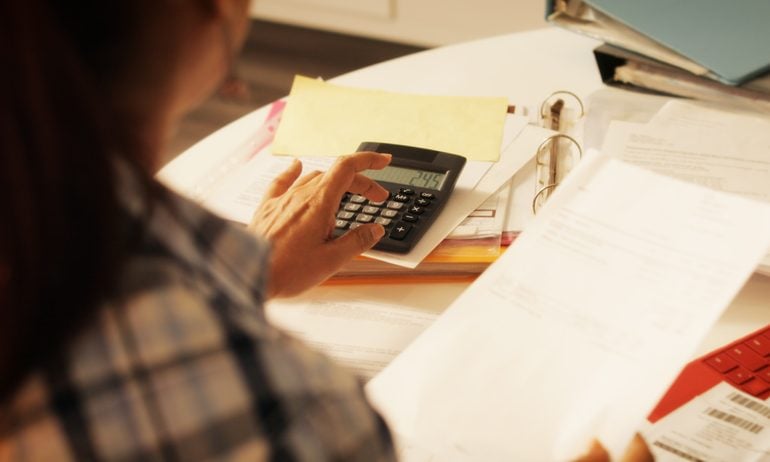IRS Tax Payment Plan: How It Works, How to Apply
Eligible taxpayers can apply online to set up an IRS installment agreement and pay their tax bills over time.

Many, or all, of the products featured on this page are from our advertising partners who compensate us when you take certain actions on our website or click to take an action on their website. However, this does not influence our evaluations. Our opinions are our own. Here is a list of our partners and here's how we make money.
On this page
An unexpected tax bill is a surprise few people want to encounter. And when that balance turns out to be more than you can afford, it's easy to feel overwhelmed. Thankfully, the IRS has tax payment plans that can help you tackle your bill over time.
What is an IRS payment plan?
An IRS payment plan is an agreement you make with the agency to pay your federal tax bill over time. You can set one up online, by phone or in person. The IRS offers short-term and long-term payment plan options.
Short-term payment plan
- A short-term tax payment plan gives taxpayers the option to pay off their tax debt within 180 days. If you owe less than $100,000 in combined tax, penalties and interest, you’ve filed all your tax returns, and you can finish paying off your tax debt within six months, you are likely eligible for a short-term payment plan.
Long-term payment plan
- A long-term tax payment plan, also sometimes called an installment agreement, gives taxpayers who may need more than 180 days to settle their tax bill the option to pay off their tax debt in monthly installments for up to six years. If you owe $50,000 or less in combined tax, penalties and interest, you’ve filed all your tax returns, and you need more than six months to pay your tax bill, you may be eligible for a long-term payment plan.
Which plan makes sense for you depends on how much you owe and how quickly you think you can pay your balance off. As long as you're keeping up with your payments, the agency usually won't issue a tax levy or a tax lien
Best Overall Tax Software
AD
- Federal: $79 to $139. Free version available for Simple Form 1040 returns only.
- State: $0 to $69 per state.
- Expert help or full service filing is available with an upgrade to Live packages for a fee.
Disclosures: TurboTax Free Edition is for Simple Form 1040 returns only (no schedules except for Earned Income Tax Credit, Child Tax Credit and Student Loan Interest). Roughly 37% of taxpayers qualify.
How to set up a payment plan with the IRS
You can apply online for a short- or long-term plan. If the IRS' assistor tool determines that you're ineligible to set up a plan online, you may still be able to apply by mail or by phone (more on that below).
Applying for a payment plan online
If you’ve previously registered for an online IRS account to get a tax transcript or an identity protection PIN, you can log into the IRS' Online Payment Agreement tool with the same user ID and password. If not, you’ll need to create an ID.me account to confirm your identity, which means having the following information on hand:
- A valid email address and access to your email.
- Photo identification (driver's license, state ID, passport).
- Your Social Security number or individual tax ID number.
- Access to a smartphone or webcam to verify your identity.
- Access to a phone or email for multi-factor authentication
.
If you need help verifying your information or require accessibility assistance, visit the ID.me help page for more information.
Applying for a payment plan by phone or mail
Another way to apply for a payment plan is to file Form 9465 with the agency. Alternatively, you can also call the IRS' main phone line (800-829-1040) to set up a new plan or revise an existing one. The number for business payment plans is different: 800-829-4933
Best Overall Tax Software
AD
- Federal: $79 to $139. Free version available for Simple Form 1040 returns only.
- State: $0 to $69 per state.
- Expert help or full service filing is available with an upgrade to Live packages for a fee.
Disclosures: TurboTax Free Edition is for Simple Form 1040 returns only (no schedules except for Earned Income Tax Credit, Child Tax Credit and Student Loan Interest). Roughly 37% of taxpayers qualify.
IRS payment plan fees
The total cost of an IRS payment plan depends on which plan you choose, how you apply for the plan and whether you qualify for a fee reduction.
If you’re a low-income taxpayer, the IRS waives the user fee if you agree to let it make automatic withdrawals from your bank account for the payments. Generally, to qualify as a low-income applicant, your adjusted gross income is at or below 250% of the federal poverty level. (See IRS Form 13844.)
| Payment plan type | Maximum you can owe to qualify | Setup fee & payment methods |
|---|---|---|
| Short-term payment plan
(180 days or less) | $100,000 in combined tax, penalties and interest. | $0 to apply online, by phone, by mail or in person. Pay balance by:
|
| Long-term payment plan
(more than 180 days) | $50,000 in combined tax, penalties and interest. | If you pay through automatic debit withdrawals:
If you pay by another method (e.g., Direct Pay, EFTPS or money order):
|
Does the IRS charge interest on payment plans?
Yes. Getting on an IRS payment plan doesn’t get you out of interest and penalties for late payment; those accrue until your balance is zero. However, per the IRS, the failure-to-pay penalty is cut in half when on a payment plan
Don't put off filing your return because of a tax bill, the IRS says. Doing so could result in late-filing fees for each month or part of the month your return is late. Instead, consider filing your return, paying what you can, and looking into an IRS payment plan or other tax debt relief options.
How to calculate your monthly payment
In general, if you have a long-term payment plan, you can choose how much you pay every month. That is, the IRS will ask you what you can afford. However, you must choose a payment amount that will pay off your debt within 72 months
- If you make your payments with a debit or credit card, you’ll have to pay a processing fee. The charge for debit cards runs $2 and some change per payment; the charge for credit cards can be nearly 2% of the payment
. - Businesses that owe more than $10,000 and set up their plan online must pay via automatic withdrawals from a bank account (“direct debit”)
.
How do I make changes to an IRS installment agreement?
The IRS' payment agreement tool lets you change your monthly payment amount, change the monthly due date, sign up for automatic withdrawals and reinstate a payment plan you’ve fallen behind on.
- If your new monthly plan does not meet IRS requirements, you may need to adjust the payment amount.
- If you can't afford the monthly payment amount, you may need to fill out Form 433-H, Form 433-F and/or Form 433-B.
Can I apply for an IRS payment plan myself?
Yes. You are not required to pay a third party to apply for a payment plan.
If you do hire a tax-relief company to help you settle your debt, you may have to give it power of attorney to apply for an IRS payment plan on your behalf. Proceed with caution and do your research, as the Federal Trade Commission warns on its website:
“The truth is that most taxpayers are unlikely to qualify for the programs these scammers advertise. In many cases, these companies don't settle your tax debt. Some don't even send your paperwork to the IRS to apply for programs to help you. These companies often leave people even further in debt
Article sources
NerdWallet writers are subject matter authorities who use primary,
trustworthy sources to inform their work, including peer-reviewed
studies, government websites, academic research and interviews with
industry experts. All content is fact-checked for accuracy,
timeliness and relevance. You can learn more about NerdWallet's
high standards for journalism by reading our
editorial guidelines.
- 1. Internal Revenue Service. Additional Information on Payment Plans. Accessed Mar 15, 2024.
- 2. ID.me. Internal Revenue Service and ID.me. Accessed Mar 15, 2024.
- 1. Internal Revenue Service. Additional Information on Payment Plans. Accessed Mar 15, 2024.
- 4. Internal Revenue Service. IRS.gov offers last-minute filing tips. Accessed Apr 18, 2024.
- 5. Internal Revenue Service. Topic No. 202, Tax Payment Options. Accessed Apr 11, 2024.
- 6. Internal Revenue Service. Pay Your Taxes by Debit or Credit Card or Digital Wallet. Accessed Apr 9, 2024.
- 1. Internal Revenue Service. Additional Information on Payment Plans. Accessed Mar 15, 2024.
- 8. Federal Trade Commission. Tax Relief Companies. Accessed Feb 13, 2023.
More like this
Related articles
Stressed about taxes or bookkeeping?
with LedgerWay








